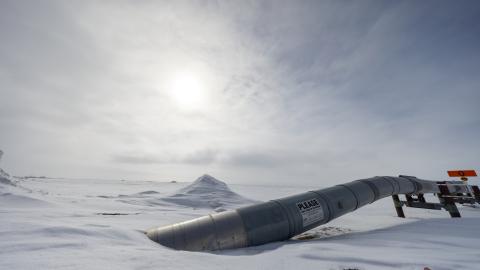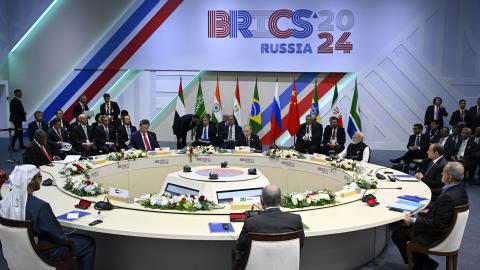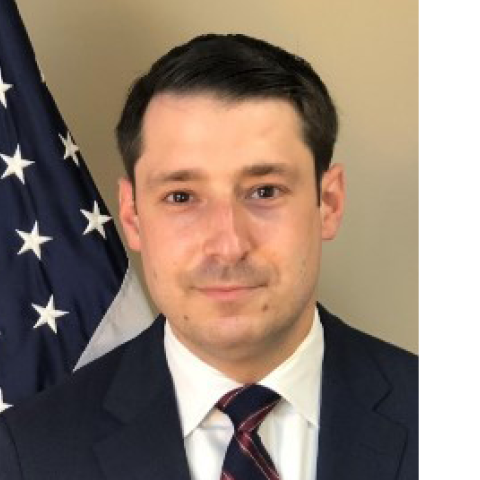Within 24 hours last week, two prominent think tanks on both sides of the Atlantic Ocean released alternative strategies for conducting the war in the Afghanistan. The reports issued by the Afghanistan Study Group (ASG) in Washington and the International Institute for Strategic Studies (IISS) in London both call for a dramatic scaling back of the coalition's war goals and military efforts in Afghanistan. They shared the basic underlying position that the means being spent on the war have exceeded the value of the objectives being sought. Yet, while the two reports raise important points, implementing their recommendations would be premature.
BACKGROUND: The ASG began meeting after the Obama administration launched its new Afghan-Pak strategy last December to assess its effects and discuss alternative approaches that could more effectively achieve U.S. global interests at a lower cost in terms of resources and people. Its members have concluded that the current strategy has failed. According to the Group, due to the recent surge in American troops and the decision to engage in a comprehensive nation-building exercise, the United States is spending almost US$ 100 billion annually on various programs in Afghanistan. Meanwhile, thanks to earlier U.S. military operations, only approximately 400 "hard-core" members of al-Qaeda remain in all of Afghanistan and Pakistan, effectively an accomplishment of the original goal of the American intervention.
In the ASG's assessment, "The U.S. interests at stake in Afghanistan do not warrant this level of sacrifice". To accomplish these objectives better, the Group is seeking to change how Americans view the conflict. Their study believes that the large Western military presence in Afghanistan has counterproductively led many Afghans and Pakistani Pashtuns to take up arms to resist what they see as an illegitimate foreign presence. The ASG also asserts that, rather than being a war between the Karzai government and insurgents allied with international terrorists, the conflict in Afghanistan is actually a civil war among several groups competing for power and resources.
Given these views, the ASG supports a large-scale U.S. military withdrawal, especially from southern Afghanistan, combined with a negotiated resolution to the conflict that would establish a decentralized political system in which many competing Afghan groups exercise some authority. The study further endorses a U.S. diplomatic campaign to encourage influential countries near Afghanistan—including China, India, Iran, Pakistan, Turkey, and Saudi Arabia—to become more deeply engaged in stabilizing the country. Finally, its members argue that the United States can rely on limited applications of military power to prevent Al Qaeda or other international terrorists from establishing another safe haven in Afghanistan.
The analysis of the International Institute for Strategic Studies (IISS) is less developed than that of the ASG since the Institute did not issue a separate study on Afghanistan. Instead, their position is reflected in sections of their annual Strategic Survey and several commentaries published in the media. Still, the Institute's views and recommendations strongly resemble those of the ASG.
The main IISS concern is that, in committing to a counterinsurgency campaign in Afghanistan, the Obama administration has engaged in an excessively ambitious plan of nation-building with the unrealizable goal of establishing a secure and politically stable country with a strong central government. The Institute considers this goal unrealizable and therefore urges Western governments to consider how best to protect their interests following the inevitable reduction of foreign troops. In particular, the IISS advocates pursuing the more modest goal of disrupting, dismantling, and defeating Al Qaeda in Afghanistan and neighboring Pakistan while allowing the Taliban, which are not seen as threatening Western countries directly, to exercise control over the Pastun-dominated areas of southern Afghanistan. A considerably reduced Western military presence based in northern Afghanistan would then apply limited military force to prevent the Taliban from conquering the entire country or Al Qaeda from reestablishing operational bases in Afghanistan, though they consider either development unlikely. The West could then provide economic and other assistance to local allies while supporting a highly decentralized Afghan political system in which most policy decisions are made at the provincial level. The IISS also advocates a similar confederal organization for the Afghan Security Forces, which would integrate local militias outside of the Pashtun areas controlled by the Taliban.
IMPLICATIONS: These reports make a valuable contribution to the international debate on how the United States and its allies can best advance their interests in Afghanistan. We should constantly ask ourselves whether the Afghan campaign is proceeding well and, if not, what we should do to improve matters. It is also important to have a fall-back strategy in case the current counterinsurgency surge approach fails or proves too costly. Arguments about sunk costs must not be blindly accepted as a reason to continue an unwinnable war. As long as international terrorists are denied access to the nuclear weapons in Pakistan or other countries, the amount of damage they can do is inherently limited.
Europeans will likely cite the IISS report to support their desire to reduce their troop commitments in Afghanistan and rely more on economic, diplomatic, and other non-military means. In contrast, the ASG, while drawing more attention in Washington than the IISS assessment, is unlikely to affect U.S. policy before the Obama administration conducts a formal review of its Afghan-Pak strategy in December. As a result, the Afghanistan conflict is likely to continue to become less a coalition effort and increasingly a U.S.-led campaign, making it Obama's War.
The reports indirectly highlight the communication complexities facing Western governments. Their leaders have multiple audiences they must address, but three are especially important. First, they must make the Taliban think they will remain engaged militarily in Afghanistan as long as necessary to compel the insurgents to negotiate a peace settlement. Second, they must make the governments of Afghanistan and neighboring countries understand that the international commitment is limited and that they must therefore increase their own efforts to promote peace and prosperity in Afghanistan. Third, Western leaders must assure their home audiences that their sacrifices in lives or treasure will not be excessive or in vain.
On the negative side, the reports do not really help us overcome the problem of clearly distinguishing a counterinsurgency from a counterterrorism strategy. The best way to prevent the Afghanistan-Pakistan theater from becoming a terrorist haven is to defeat their local insurgent allies. In practice, it is hard to separate the Taliban from al-Qaeda. The two groups have been closely interlinked for years by personal and ideological ties. Even if the Taliban leadership wanted to prevent Al Qaeda from returning to Afghanistan, it is hard to imagine the Taliban authorizing the use of force against its Islamist allies to prevent them from doing so.
The reports may overestimate the pressure on NATO governments to curtail their military engagement in Afghanistan. In the United States and many other NATO countries, the political leaders have sufficient maneuvering room to sustain their military commitments to Afghanistan for at least a few more years. Although public support for the war has fallen almost everywhere, it has not become a salient electoral issue. The economy and other domestic issues remain the most decisive in determining election outcomes. In the United States, the Republicans are if anything even more supportive of sustaining the large U.S. troop presence in Afghanistan now that the decline in American troop strength in Iraq is reducing strains on the overstretched U.S. military.
Neither report devotes much attention to assessing the regional consequences of their preferred policies. Under present conditions, allowing the Taliban to regain control of southern Afghanistan would likely lead neighboring governments again to provide assistance to local favorites. The Pakistanis could conceivably support the Taliban, as could Saudi Arabia and perhaps even China if Beijing received assurances that the Taliban would not support Uighur extremists in China and would not challenge China's growing economic presence in Afghanistan's natural resources sector. Meanwhile, Russia, India, and perhaps other countries (such as the Central Asian states) would back various anti-Taliban forces. Under these conditions, we are likely to see a protracted civil war, though with local rather than Western governments bearing most of the costs.
CONCLUSIONS: Above all, implementing the reports' recommendations would be premature. The NATO troop surge has only just occurred, with the last additional American soldiers joining the battle only a few weeks ago. History tells us that the fate of insurgencies is very unpredictable, a lesson reinforced most recently by the Iraq War, where the coalition managed to convince sufficient local groups to resolve their differences through political means. The coalition might train and equip sufficiently powerful Afghan National Security Forces to allow the Kabul government, along with its local allies, to balance the insurgents, encouraging guerrilla fighters to defect and their commanders to compromise. Without military pressure, the only thing senior Taliban leaders appear willing to discuss is how rapidly Western troops will abandon their country.













